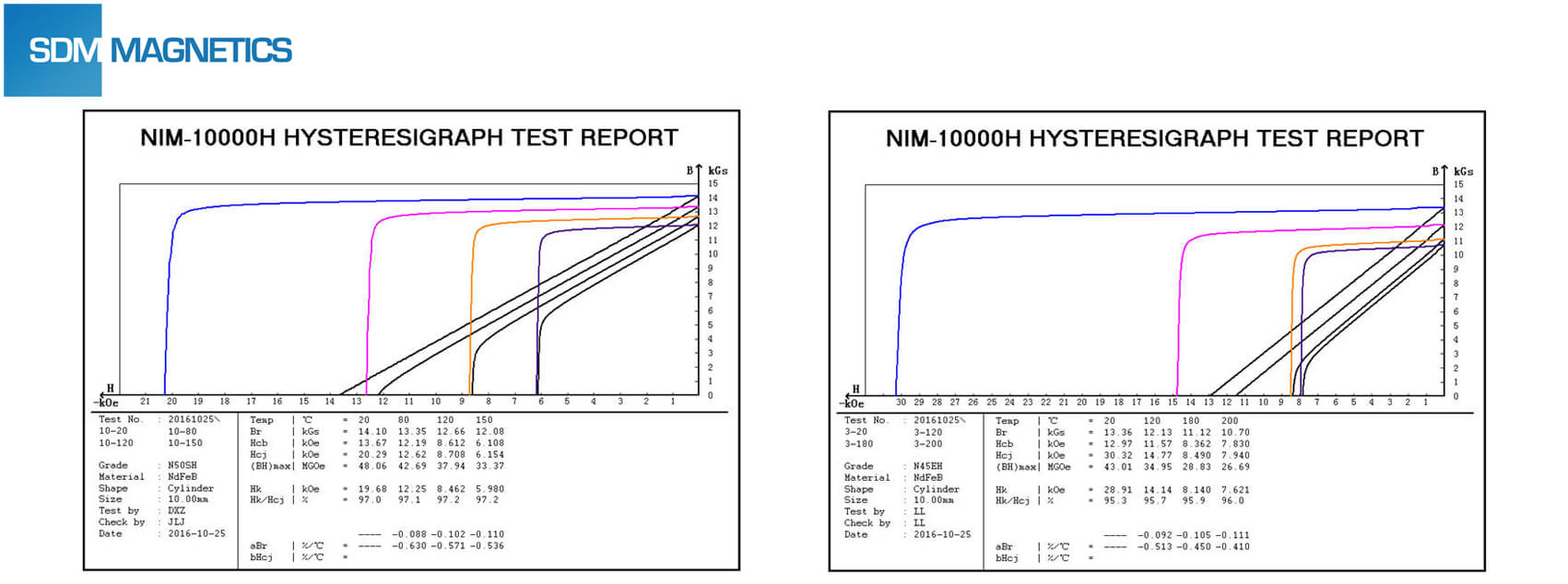The Curie temperature of pure Nd2Fe14B is only 313 deg C which much lower than SmCo5 and Sm2Co17, and its saturation magnetization drops quickly with the increasing temperature. The temperature coefficient of Neodymium magnets has relatively higher absolute value, generally, its temperature coefficient of remanence αBr is between -0.08%/deg C and -0.12%/deg C from -50 deg C to 150 deg C. In reality, low temperature coefficient Neodymium magnets have a certain market, such as precision instruments and aerospace.

Many people know that Cobalt can be utilized to improve thermal stability of the Neodymium magnets. Actually, both Curie temperature and temperature coefficient of Nd2(Fe1-xCox)14B can be significantly improved through substituting Cobalt for Iron, but it will also lead to a negative impact that reduce intrinsic coercivity, in the meanwhile, the room-temperature magnetocrystalline anisotropy field decreased little when x is low. Such phenomenon could not be explained by the magnetocrystalline anisotropy field changes of Nd2(Fe1-xCox)14B. Obviously, the changes of phase structure and microstructure are a critical factor to reduce temperature coefficient.
Both SmCo5 magnets and Sm2(Co, Cu, Fe, Zr)17 magnets have the heavy rare-earth temperature compensation effect. In fact, similar effect is also existing in the Neodymium magnets, and plays an important role in the enhancement of the temperature stability. Introducing moderate Dysprosium and Holmium to substitute Neodymium will compensate negative temperature coefficient of the Neodymium magnets, then obtained near-zero low temperature coefficient Neodymium magnets.
Besides substituting Cobalt for Iron or substituting Neodymium for Dysprosium and Terbium, the temperature coefficient also can be improved by adding Aluminum, Gallium, Copper and Niobium on the basis of above substitutions. Such low melting point metal or refractory metal will influence the intrinsic magnetic properties after entered into the main phase, but manufacturers usually use them to modify microstructure of the magnets.
